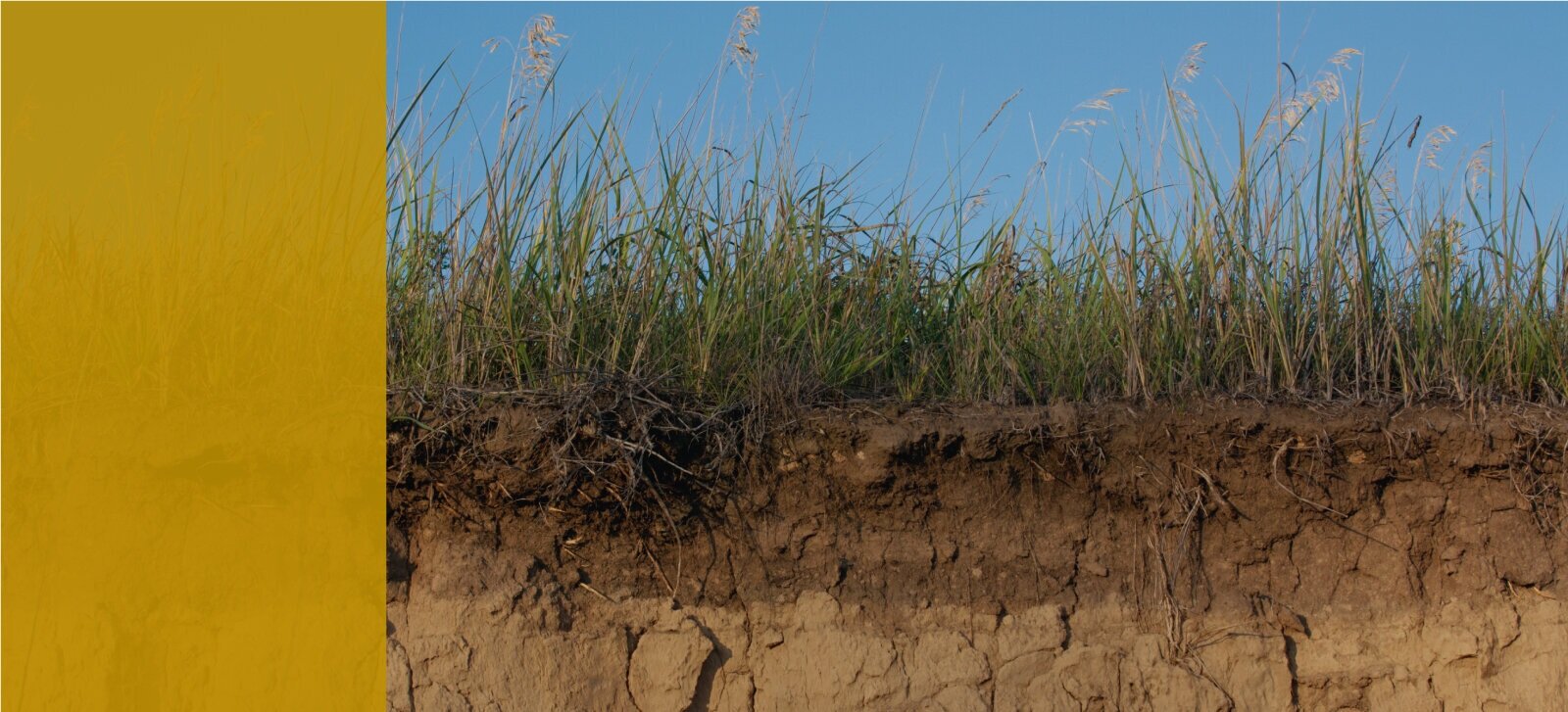
Revitalise Soils
Bolster the Foundations
Soils globally have been impaired by deforestation, burning & intensive agriculture.
Soil oxidation results simply when soil is not covered by greenery 365 days of the year.
Bare soil exposes roots and microbes. These complex, tiny symbionts dry out and die, exporting formerly inert carbon back to the atmosphere as CO 2
Major causes of oxidation are agricultural cropping cycles and ploughing (tilling), deforestation or de-vegetation due to deliberate cutting or fire. Over centuries these have done huge damage to soil stocks – somewhere between 50 & >200 BtC!
Bare, hot soil absorbs and re-radiates heat as well as emitting carbon, contributing even more to warming.
Healthy covered soil absorbs carbon which then holds water. 1g of carbon can absorb 4g water – helping restore hydration
Soil is a living ecosystem providing critical foundations for plant regrowth plus long-term water & carbon capture.
Soil is a complicated living ecosystem which feeds plants, pulling carbon into the soil. Healthy soil has:
All the minerals & nutrients needed by plants
Billions of microbes living symbiotically with the vegetation
>4% organic matter which feeds soil carbon – currently the top 30cm of soil globally stores ~ 680 BtC (FAO)
A spongy consistency which absorbs and stores water
Excessive heat, pesticides and herbicides kill these microbes and destroy the organic matter. Large areas of crop land and degraded land have <1% organic matter, rendering them dead.
The good news is there is increasing evidence soils can be reactivated within two seasons via a combination of mulching using microbe-rich composts, tailored sophisticated seed inoculants, cover cropping and no-till, no chemicals farming.
Soil regeneration can be rapid with advanced soil intervention techniques, e.g. fungi-rich compost.
New Mexico Desert US Achieving higher carbon capture than rain forests.
Dr. David C. Johnson (University of New Mexico & Chico State) has pioneered development of “biologically enhanced agricultural management” using bio compost on cover crops.
The compost forms over a year-long process using a simple “bio-reactor” (plus earthworms) and is mixed in (or just watered on) to existing soil. The process rapidly turned desert sand to nutritious soil.
The results were very impressive:
• Fungi dominated compost with 25x increase in active soil fungal biomass
• Annual capture >10 MtC/ha/yr, more than 20 times the current observed carbon increase in equivalent no-till soils. This is now the subject of two large-scale ongoing studies (2020) .
Source Dr David Johnson Bioreactor June 2020 Regenerating the Diversity of Life in Soils
One example is “Dirt-to-soil” farming in the US: eco-friendly, mixed-use & profitable.
Gabe Brown (North Dakota, 5000 acres)
“Dirt to Soil” in 20 years.
Evolved to mimic nature: no fertilisers, herbicides or pesticides.
Diversified ranch with multiple income streams from crop rotation, grass finished beef and lamb, pastured pork, and chickens and eggs
Soil’s health, carbon capture, temperature and moisture retention substantially improved, and now naturally sustainable
Profits, nutritional and calorie yields higher than from conventional monoculture farming
Brown’s tips:
Grow something at all times. Avoid tilling (ploughing). Instead, push seeds into the soil
No monocultures: many species at the same time
Animal grazing improves the soil
Experiment continually
Fortitude to stick to plan for five years
Zero (or minimal) chemicals
Next step to replicate at large scale?
Carbon Mat: Feeds soil, keeps it cool, suppress weeds, and protects from erosion.
Integrating livestock onto cropland.
Optimising solar energy collection.



